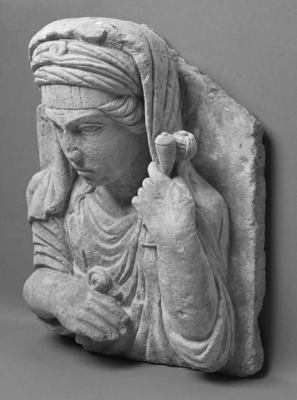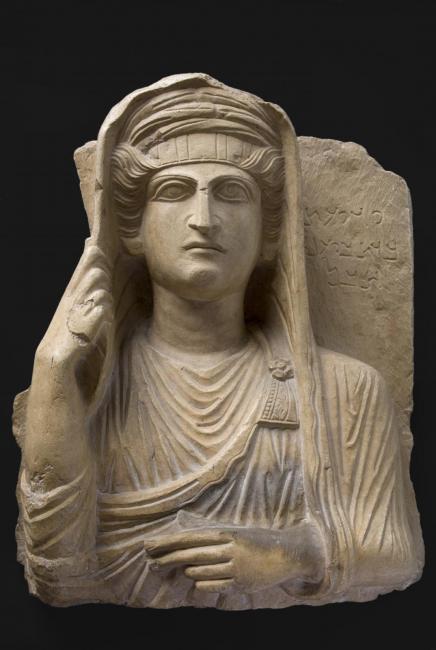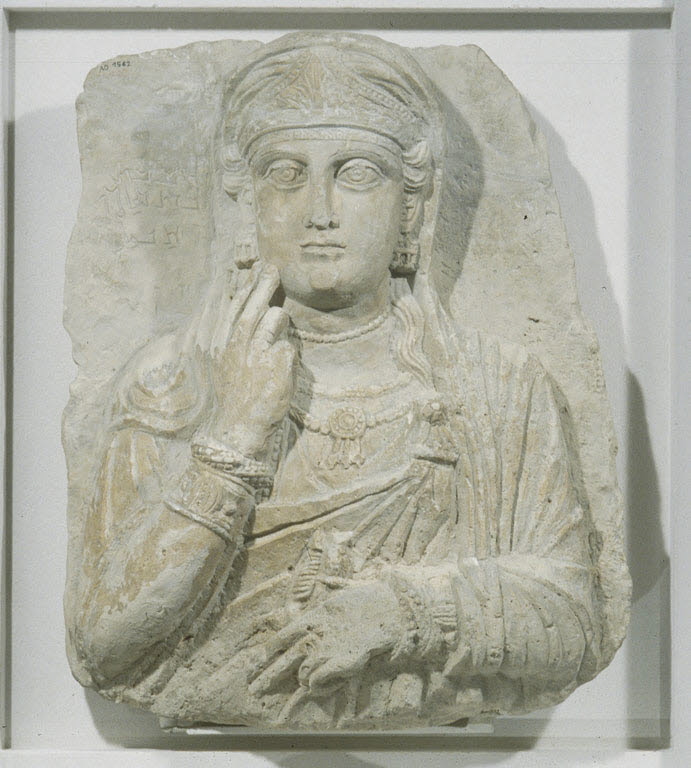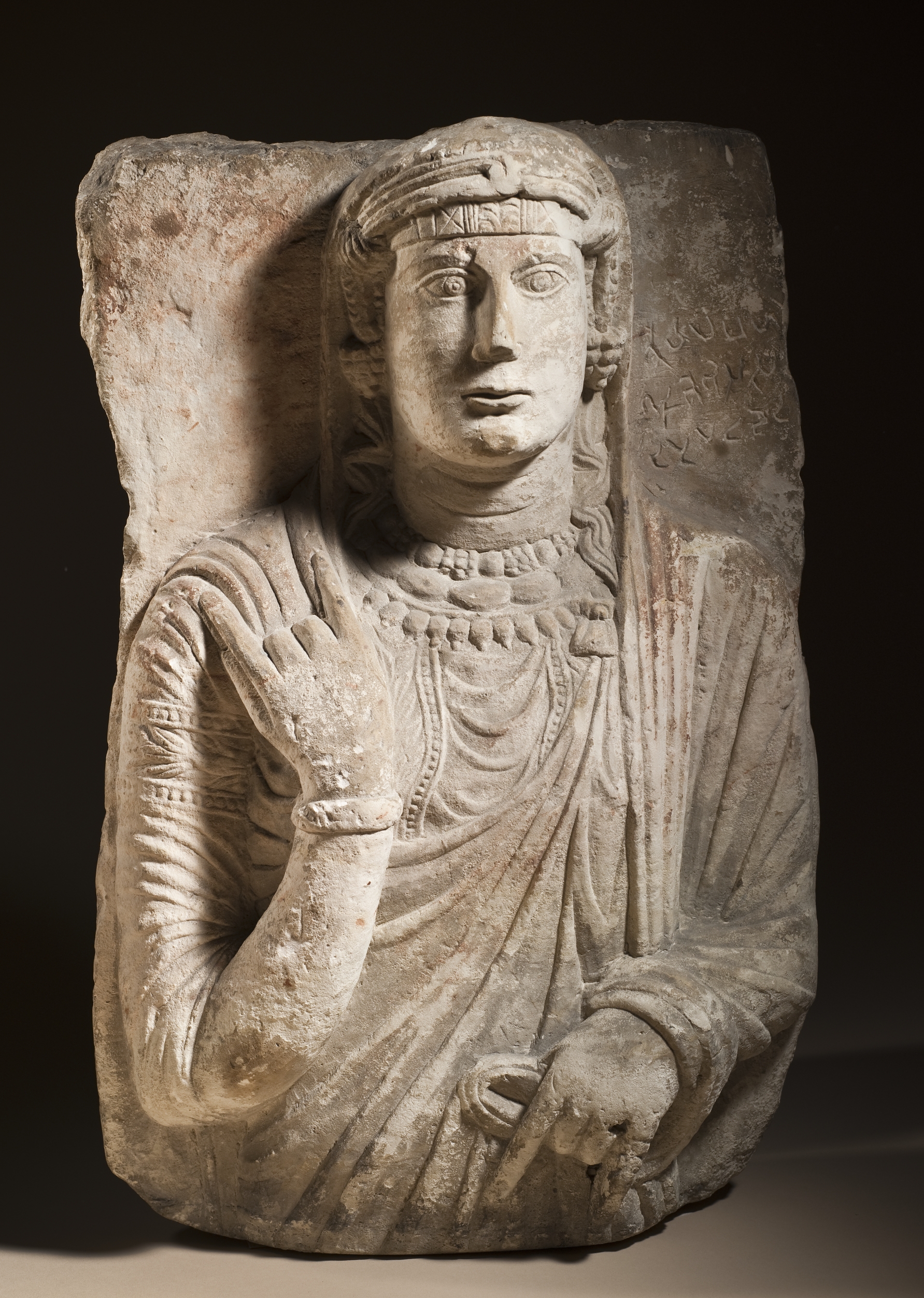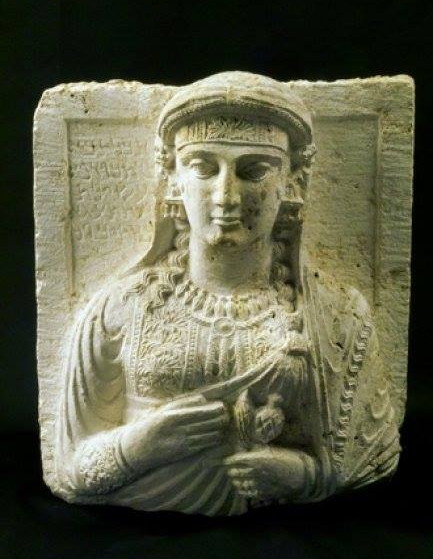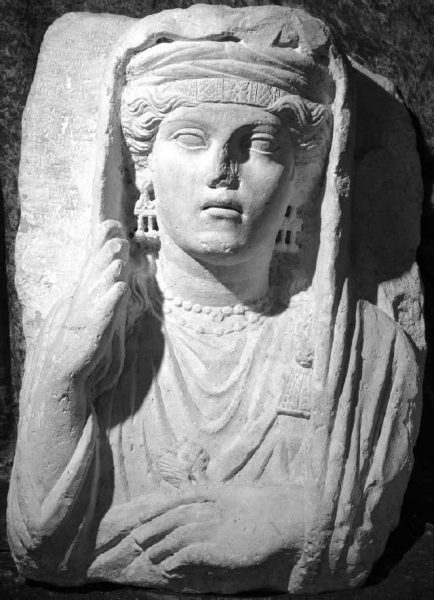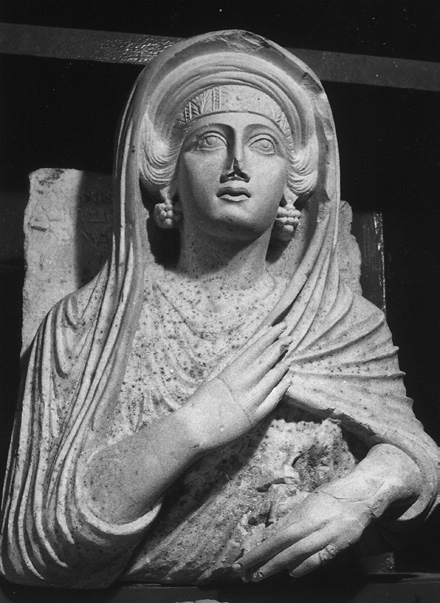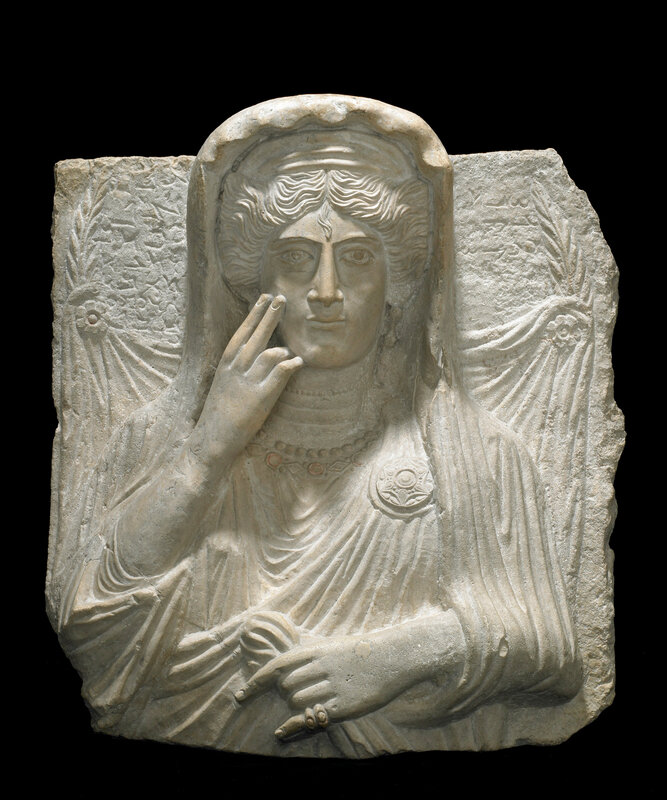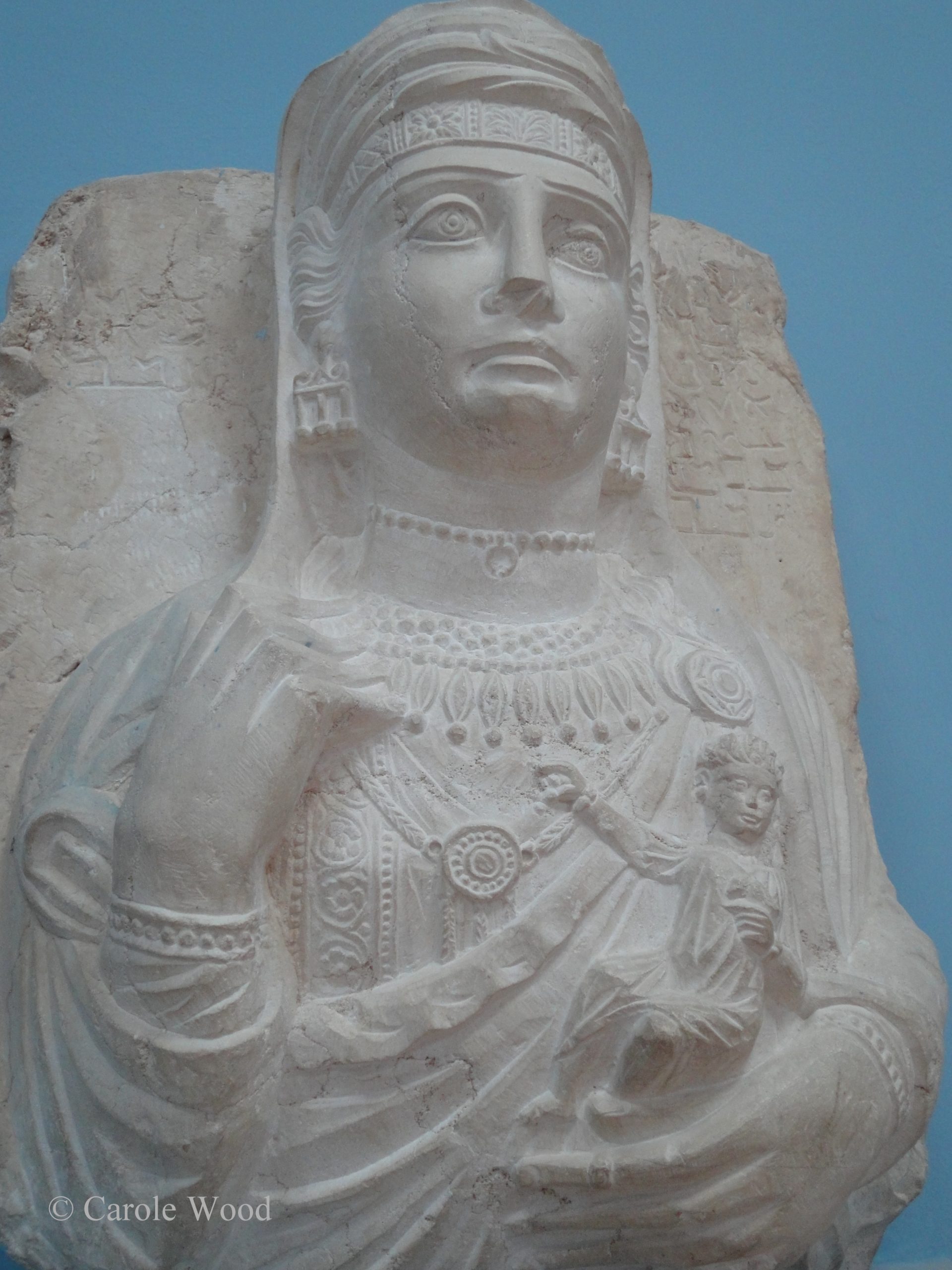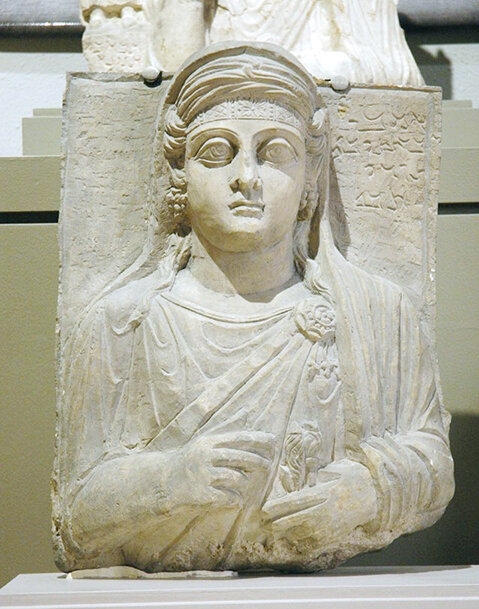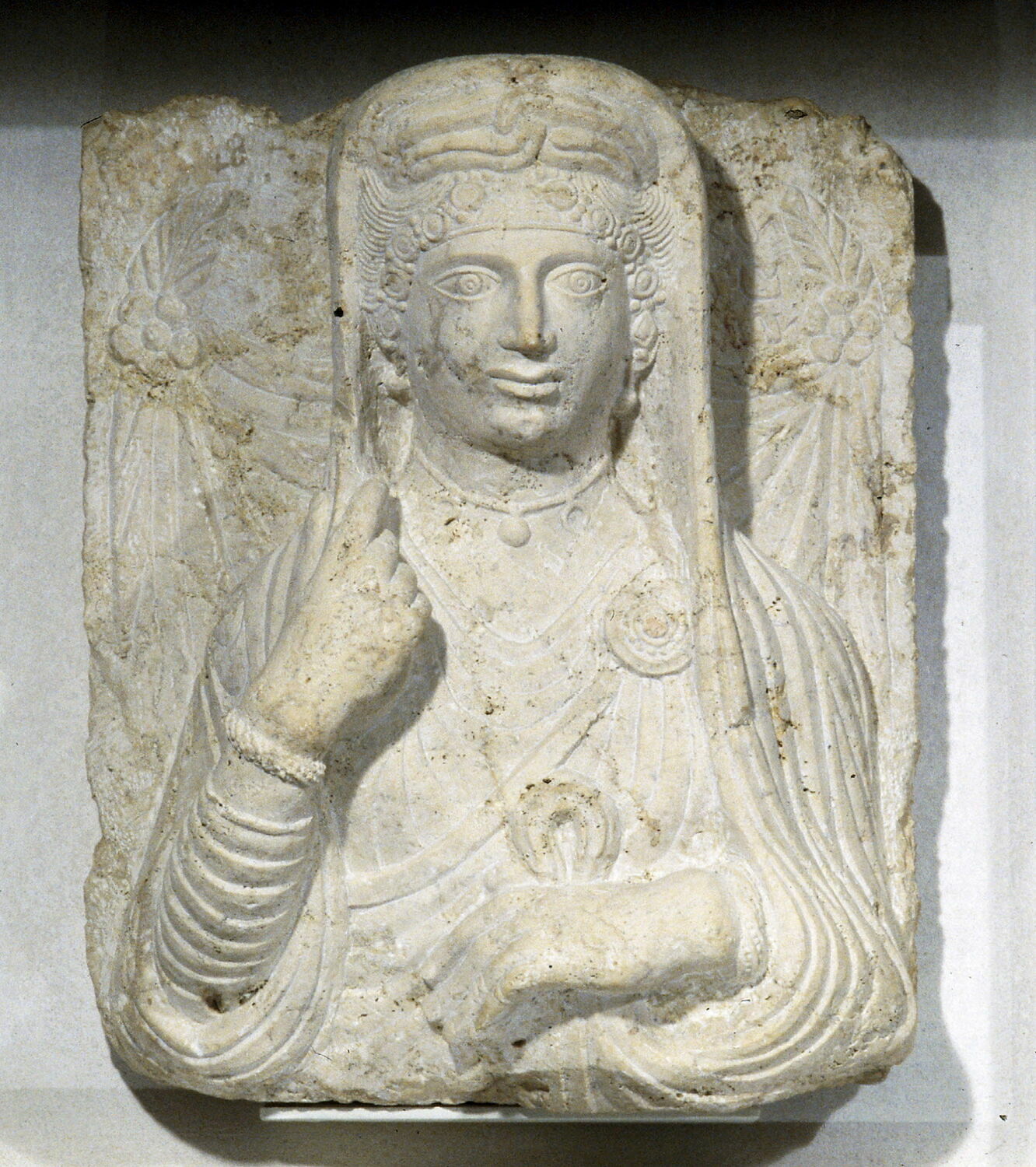Kunsthistorisches Museum Wien https://www.khm.at/en/object/50582/, relief of a woman from Palmyra, second half of the 2nd century. Triangular brooch with a feline head.
“The deceased is shown here in rich costume, with her right hand she gathers her robe, in her left hand she holds a spindle and whorl, thus showing her social status as the mistress of the house. The remains of the epitaph in Palmyrene-Aramaic can be seen next to the head.”
One of my favorite 🙂
Literature:
Georg A. Plattner, Palmyrenische Reliefs im Kunsthistorischen Museum Wien, Phoibos Verlag, Wien 2010:
“Inventory no.: ANSA I 1503
Material: Limestone
Measurements: H.: 38 cm; B.: 30 cm; D.: 15.5 cm; max. relief height: 13.5 cm; Face height: 8.5 cm.
Condition: complete except for the upper left and right corners of the relief ground. Fragment of the inscription next to the l.
shoulder broken off and glued on; Cracks and fissures in the stone, roughly across under the chin and under the l.
elbow. Tip of nose bumped and partially broken off. Surface weathered and sintered, in particular
on all edges of the relief ground.
Acquisition: Purchased from Oskar Fischl in Beirut, 1925.
Date: 2nd half of the 2nd century AD
Inscription: CIS 4407; Hillers – Cussini 1996, 132 no. 767.
[- ‒ -]
[brt] [daughter of]
[y]rh.bwl[‘] [Ia]rhibôl[â]
[br] ml’ son of] Malê
Loculus locking plate with the bust of a woman whose name has not survived.
The undergarment is held over the left breast by an elaborate fibula, the body is trapezoidal, decorated with a row of pearls on both sides, the upper end is crowned by a lion’s head. The coat is pulled over the head as a veil. The right hand lies bent in front of the stomach and holds a puff of the cloak between thumb and forefinger. The left hand is raised vertically and grasps the veil, at the same time holding the distaff and spindle, both very carefully and detailed executed (for the meaning cf. No.3). The head is facing the viewer. The eyes are defined only by a circle cut through the upper eyelid, which represents the iris. The lower eyelid merges into the cheek area without a furrow. The narrow mouth is mainly defined by the slightly protruding lower lip. The hair is visible at the temples and is styled back in loose curls under the turban, covering the ears. Longer strands of hair, curving in an S-shape, fall down on both sides of the neck down to the chest. The forehead band is subdivided into broad fields by two oblong vertical sections, none of which are decorated. The turban is placed in three folds over the forehead bandage, the lowest of which is twisted, the two upper ones connected in a loop over the forehead.
The upper side of the head, i.e. the veil, has been carefully smoothed like the viewing sides and executed down to the relief ground, which is still preserved in a small piece directly behind the head. The top two corners of the slab are lost, perhaps broken off when the loculus was opened for subsequent burials. In any case, the traces of sinter also go over these break edges. Since this sinter is only present on the lateral edges, it could also be the residue of a mortar with which the plate was set in the loculus; the opening could then have been closed with mortar at the missing points at the corners.
With the loss of the upper left corner of the plate, the name of the deceased has also been lost. The naming of three generations is unusual; while usually only the father’s name is mentioned, here the grandfather is also mentioned.
For an early date still in the 1st half of the 2nd cent. AD speak the frontality of the face, the indication of the spinning device and the more ancient form of the trapezoidal fibula on the robe. However, the eye has already been cut through the upper eyelids. Also, the left and not, as usual, the right hand is raised. This iconographic detail appears in the reliefs, as a rule, from the late 2nd and 3rd centuries AD. A single parallel is known to me, in which the deceased also holds spinning devices in her raised left hand; this privately owned relief was made by Klaus Parlasca around the middle of the 2nd century. AD dated.
A comparable relief is that of the Qibôdô; similar are the trapezoid fibula, the undecorated headband and the hairstyle, especially the long strands of hair falling on the shoulder, as well as the spinning devices in the – albeit lowered – left. The circle of the iris cut off at the top and the missing pupil, on the other hand, like the raised left arm, suggest that the relief dates back to the second half of the 2nd century.
An interesting coincidence in the names of the sitters comes from a relief in the Ny Carlsberg Glyptothek; Yarhibôlê and his father Malê are shown, between the two figures the small bust of the young daughter Bêltâ. The relief is dated to the years 150-170 AD. If the one depicted on the Viennese relief were actually the Bêltâ, this would also correspond to the dating in the 2nd half of the century. On her father’s and grandfather’s mid-century relief she would have been depicted as a child, as in banquet reliefs not as a deceased but as a member of the family. The relief would later have been made for her in Vienna.”
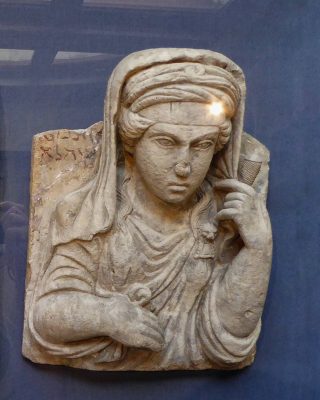
https://naehrlich.de/daserberoms/2016/08/15/kunsthistorisches-museum-wien/

